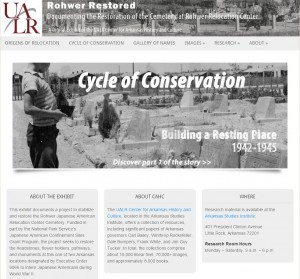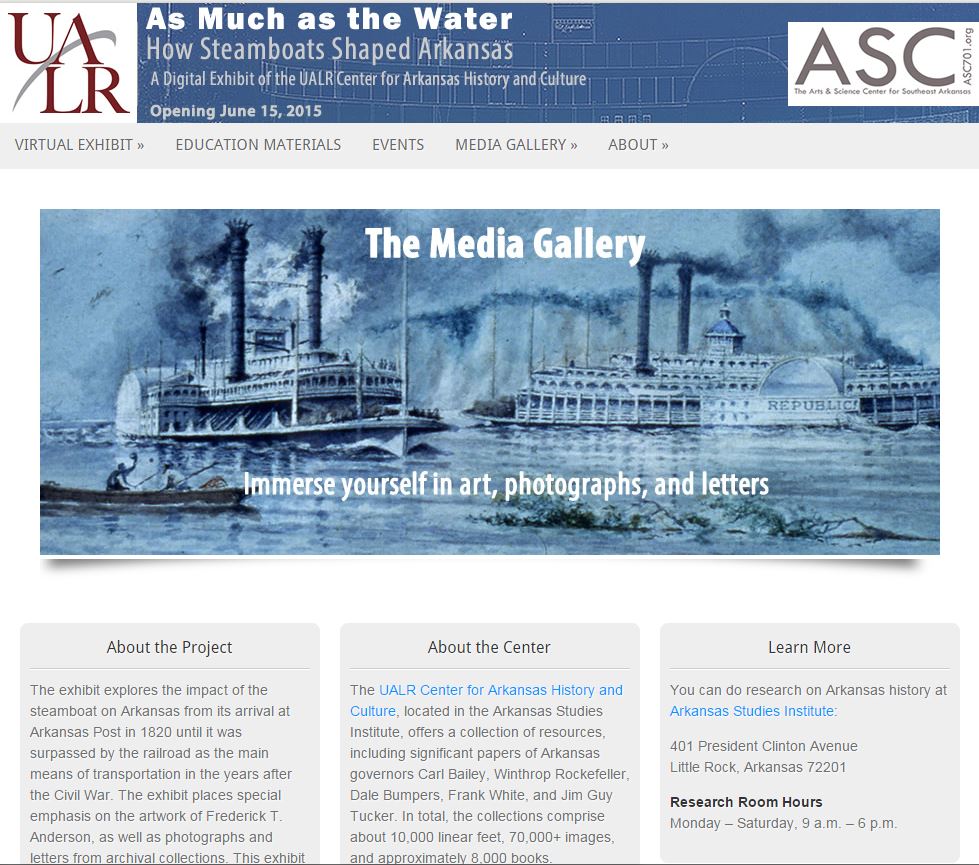Arkansas History and culture center reveals virtual exhibits
The University of Arkansas at Little Rock Center for Arkansas History and Culture recently previewed its second virtual exhibit of the summer.
A digital display featuring the restoration work on a World War II-era Japanese-American “relocation center” cemetery joins an exhibit on the influence steamboats had on Arkansas.
Both are available for viewing now:
“As much as the water: How steamboats shaped Arkansas”
This online exhibit explores the steamboat’s influence “… from its arrival at Arkansas Post in 1820 until it was surpassed by the railroad as the main means of transportation in the years after the Civil War.”
The Arkansas Humanities Council and the National Endowment for the Humanities awarded the UALR Center for Arkansas History and Culture $13,876 to develop the exhibit and to host a related educational symposium. The symposium is set for November.
Frederick T. Anderson’s artwork plays a prominent role in the virtual display, which also features essays and historic photos and letters. A partnership between the Center for Arkansas History and Culture and The Arts & Science Center for Southeast Arkansas led to the creation of the exhibit.

Rohwer restored: Documenting the restoration of the cemetery at Rohwer Relocation Center”
In the summer of 1942, Arkansas started housing Japanese-Americans forced to move from their West Coast homes during World War II.
Months after the Dec. 7, 1941, attack on Pearl Harbor, amid fears that people of Japanese heritage might assist Japan in the war, Franklin D. Roosevelt signed Executive Order 9066, which authorized the secretary of war to institute military zones on the West Coast and to ban certain groups, including Japanese-Americans, from those areas.
Many were displaced from their homes and taken to camps, mostly west of the Rocky Mountains, with two exceptions in Arkansas.
Officials chose the Arkansas sites, in part, because they were isolated but had access to railroads. The Arkansas centers were named after nearby communities Jerome and Rohwer.
The Rohwer site was one of three relocation centers in the country with cemeteries, and its cemetery was “the largest and most inventive.”
Through the virtual exhibit, the Center for Arkansas History and Culture will document a National Park Service-funded project to restore the headstones, flower holders, paths and monuments at the Rohwer Japanese American Relocation Center Cemetery.
To date, the monuments have been restored, and restoration work will now proceed to the headstones.
The virtual exhibit will be expanded as work is completed to provide more detail on the restoration and background on the cemetery and the lives of those buried there.
UALR’s Center for Arkansas History and Culture, located in the Arkansas Studies Institute, 401 President Clinton Ave., makes available an array of research resources, including papers of Arkansas Govs. Carl Bailey, Winthrop Rockefeller, Dale Bumpers, Frank White, and Jim Guy Tucker.
